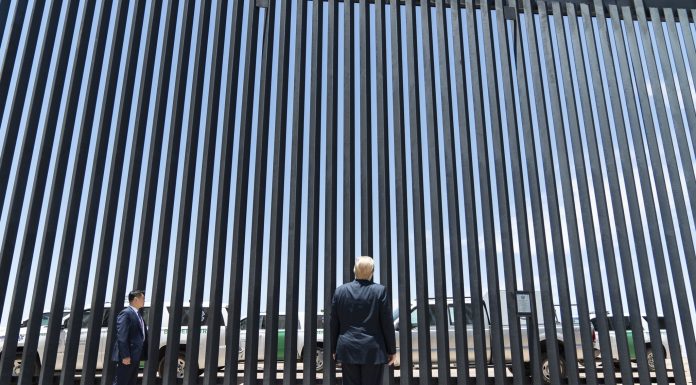The Center for Immigration Studies studied data from the 2019 American Community Survey and found that net migration to the United States has fallen since 2017.
CIS called this data the “Trump Effect,” since it bucks the traditional understanding that immigration must rise as America’s economy grows and must fall as the economy recedes.
“Many commentators argue that immigration raises and falls with the economy largely outside the control of governmental policy,” CIS Director of Research Steven Camarota said.
“The new numbers demonstrate otherwise. The economy was strong 2017 to 2019, yet policy changes seem to have significantly slowed the pace of immigration.”
Since President Donald Trump’s term began in 2017, the immigrant population grew by about 200,000 people per year, far smaller than the average of 650,000 immigrants per year from 2010 to 2017.
Camarota and co-author Karen Zeigler, a demographer at CIS, said Trump’s immigration policies fostered this reduction in net migration, not an economic downturn.
The data at hand do not account for the effects of the lockdown-induced recession, since the numbers don’t extend into 2020.
The Census Bureau’s Current Population Survey, which relies on smaller and thus less reliable data sets than the American Community Survey, reveals a continued decline in net migration through August 2020.
Even as net migration falls, there are more naturalized citizens every year, indicating that the reduction is the result of non-citizens and illegal aliens leaving the country.
The data does not show whether there has been a greater tendency for non-citizens and illegal aliens to leave the country or for them not to come in the first place.
Camarota and Zeigler write about a number of Trump’s policies that contributed to the reduction in immigrants living in the United States.
Trump eliminated the welfare state’s pull for more poor migrants by requiring them to demonstrate that they will be self-sufficient upon arrival.
His administration shrank the number of refugee visas and made agreements with nations south of the border to accept more refugees.
He bolstered workplace immigration enforcement to ensure that illegal aliens do not replace American citizens.
Trump has fought against temporary protected status and Deferred Action for Childhood Arrivals, which incentivize non-citizens to enter or remain in the country illegally.
Despite Trump’s efforts to slow migration, the immigrant population reached 44.9 million in July 2019. This means that 13.7 percent of America’s population immigrated from a foreign nation, the largest share of the population in 109 years.
If the 17.1 million children of immigrants are included, then there are 62 million members of immigrant families, or about one out of every five people.
There has been a 780,000 person decline in Mexican-born people living in the country since 2010, but a 2.1 million person increase in Central American-born people.
Florida, Texas, California, Washington, New Jersey, and Massachusetts attract the most immigrants per year.
The two southern states saw more than 800,000 new immigrants since 2010, while California gained 414,000 and Washington, New Jersey, and Massachusetts gained more than 200,000 each.

